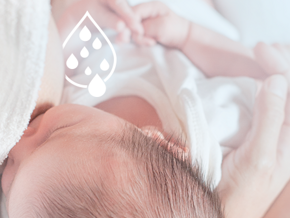
How to Breastfeed
Newborn babies are often very alert and eager to feed right after birth. Your milk won’t have come in, but this special substance you produce until then, referred to as colostrum, is full of infection-fighting antibodies. Breastfeeding also releases oxytocin, a hormone that helps shrink your uterus back to its pre-pregnancy size.
All babies are born with a suckling instinct, you may have noticed the moment you held your baby they instinctively started searching for food with their mouth. While breastfeeding is very natural, it takes time and practice for the two of you to get used to it and get into a routine. This may take at least a few weeks if not a few months until your baby gets into a better sleep, feed and wake routine; you heal and recover from the birth; and your hormones start settling back down. Be kind to yourself and allow time to adjust to being a mum, even if it’s not your first time, it can take time to get to know your new baby.
It is often encouraged to start breastfeeding straight away after delivery.
Newborn babies are often very alert and eager to feed right after birth. Your milk won’t have come in, but this special substance you produce until then, referred to as colostrum, is full of infection-fighting antibodies. Breastfeeding also releases oxytocin, a hormone that helps shrink your uterus back to its pre-pregnancy size.
Here are some useful tips to help you breastfeed
1. Watch for hunger signs
If you try to feed your baby when they are not hungry, distressed, or if they are too hungry you might find breastfeeding more difficult. Signs to look for include:
- Your baby will be awake and alert;
- Your baby opening and closing their mouth;
- Turning their head to look for the breast.
If you don’t notice their subtle cues, they may alert you by crying, however crying doesn’t always indicate hunger.
2. Get your location right
Sit in a quiet room with the lights dimmed if possible. You will be sitting for a while, so choose a comfortable seat with your back and feet well supported. Try to relax, look at your baby, slowly stroke their skin, take some deep breathes and enjoy the breastfeed – as this will help the hormones to release and let down your milk. It’s all part of natures bonding process that helps the two of you have a deep emotional connection. Particularly when you are learning to feed your baby – it’s not the time to chat on the phone or be too distracted.
3. Now to the feeding
- Position your baby on their side facing them towards your breast. Hold your baby close to you supporting their head with one arm and position their nose near the nipple of your breast.
- With your free hand, place your thumb on top of the breast away from the areola and nipple so your baby is able to take a big mouthful of breast.
- Softly tickle your baby’s nose and lips with your nipple to encourage your baby to open their mouth wide.
- Make sure your baby’s mouth is very wide (like yawning) and bring your breast to the baby.
- Watch for a good attachment: their mouth should look a little like fish lips and covering most of your areola (the circle of brownish pink skin around the nipple) and their nose is right up against your breast.
- Continue to support your breast until your baby is sucking and swallowing in a deep rhythmic pattern. Your baby should make some initial frequent sucks to stimulate your milk flow, and then become a slower, deeper, more rhythmical motion with short breaks in the cycle to swallow.
- If your baby falls asleep during the feed, simply tickle them under their chin or feet to gently wake them. There is no need to remove them from the breast and reattach until they are ready for the 2nd breast.
- If you experience pain once your baby has commenced swallowing take your baby off by placing a clean finger at the side of their mouth between their gums and breaking their suction seal, and slowly move your breast away, then position yourself again to re-attach.
If you continue to have difficulty with breastfeeding talk to your lactation consultant, local community nurse, GP, and even your breastfeeding friends for further advice. Most mums will find a solution to their breastfeeding problems if they have the right support.
Related articles


















